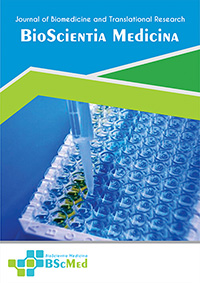Main Article Content
Abstract
Background: Functional capacity dramatically declines in non-dialysis chronic kidney disease (CKD-ND), impacting patient prognosis and quality of life. Accurate, practical assessment is crucial for timely intervention. This study evaluated functional capacity using Six-Minute Walk Test (6MWT) and explored associated clinical factors in Indonesian CKD-ND patients.
Methods: We conducted a cross-sectional study at RSUP Dr. M. Djamil Padang, enrolling 44 patients with CKD stages 3-5 not on dialysis. Using purposive sampling, we collected 6MWT distance (6MWD) following ATS guidelines and extracted demographic/clinical data (age, gender, BMI, eGFR, etiology) from medical records. Functional capacity, expressed as Metabolic Equivalents (METs), was estimated from 6MWD and patient data using the Nury formula. Descriptive statistics summarized the findings.
Results: The cohort (54.5% male, mean age 56-65 years) predominantly had advanced CKD (43.2% Stage 5) and hypertension etiology (45.4%). Functional capacity was severely impaired: mean 6MWD was low (Men: 291m, Women: 255m), and a striking 70.5% of patients exhibited low functional capacity (<3.0 METs). No participants achieved high capacity (>6.0 METs). Lower mean 6MWD and a higher prevalence of low METs were distinctly observed in patients with lower eGFR and advanced age.
Conclusion: This study reveals profound functional limitations in Indonesian CKD-ND patients well before dialysis initiation. Lower eGFR and older age were strongly associated with poorer performance. The 6MWT effectively quantifies this impairment, highlighting its utility for routine screening and emphasizing the urgent need for functional assessment and rehabilitation strategies in CKD-ND management.
Keywords
Article Details
As our aim is to disseminate original research article, hence the publishing right is a necessary one. The publishing right is needed in order to reach the agreement between the author and publisher. As the journal is fully open access, the authors will sign an exclusive license agreement.
The authors have the right to:
- Share their article in the same ways permitted to third parties under the relevant user license.
- Retain copyright, patent, trademark and other intellectual property rights including research data.
- Proper attribution and credit for the published work.
For the open access article, the publisher is granted to the following right.
- The non-exclusive right to publish the article and grant right to others.
- For the published article, the publisher applied for the Creative Commons Attribution-NonCommercial-ShareAlike 4.0 International License.





